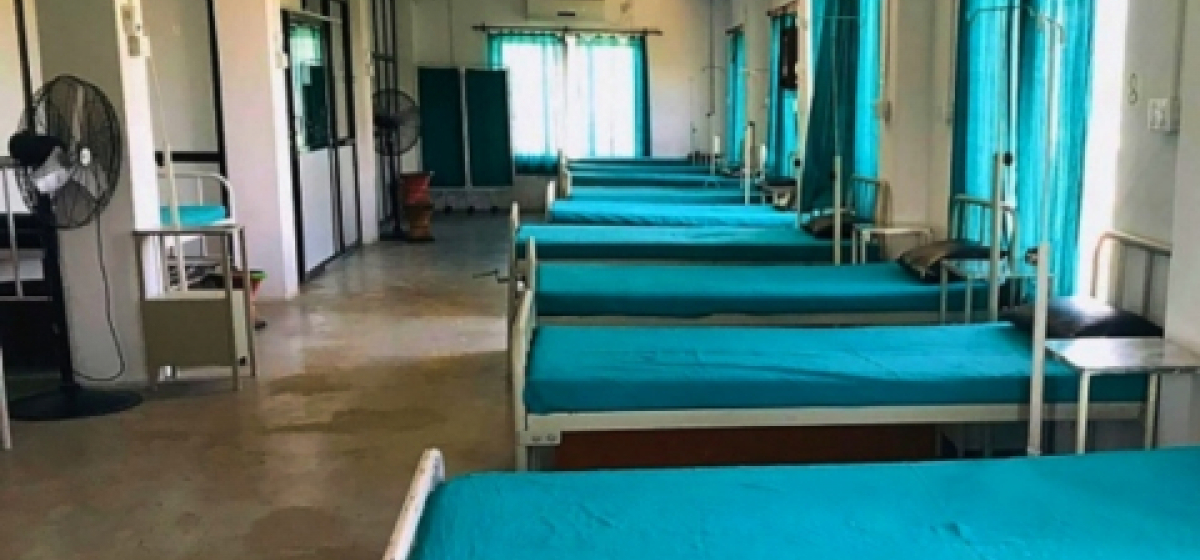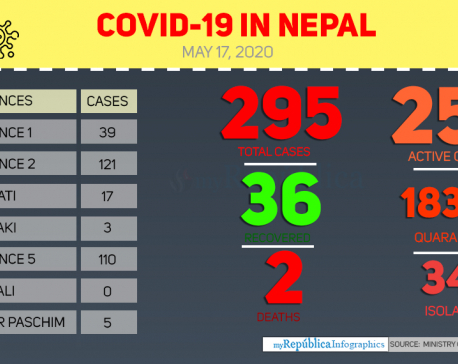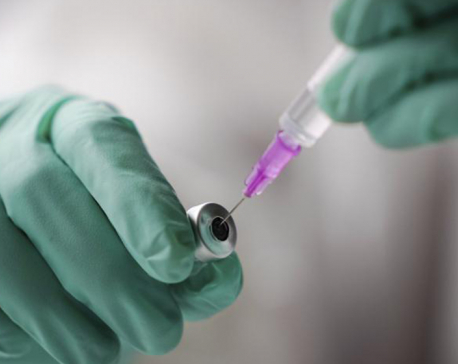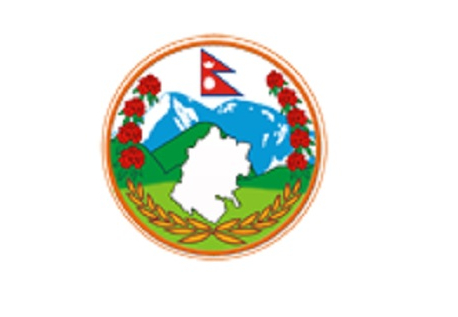
OR
Mustang lacks doctors, ICUs and ventilators to fight COVID-19
Published On: May 14, 2021 04:59 PM NPT By: Republica | @RepublicaNepal

MUSTANG, May 14: Mustang district which lies in the himalayan region and was unaffected by the first wave of the novel coronavirus (COVID-19) has witnessed a surge in infected patients from the second variant of the virus. So far, 81 people have contracted the contagious disease in all four rural municipalities of the district. With this, panic has gripped the locals of Mustang.
According to the district health office, many of the infected patients in the district have started to show symptoms and are in need of oxygen. “Despite the high level of awareness, the number of infected patients is increasing,” chief of the district’s health office, Tikaram Bhandari said. “The infected patients are currently under surveillance in home isolation and hospital,” he added.
According to the Assistant Chief District Officer Jagdish Aryal, there are six beds in the isolation ward at Mustang Hospital. Although the six beds are facilitated with medical oxygen, the lack of ventilators and intensive care units (ICU) has raised the challenge to tackle COVID-19 in the district. Mustang, a district that lacks oxygen even for the general public who come to visit the high-altitude region, is now facing an even harder time to cope with the oxygen problem for its patients suffering from COVID-19. “We have built isolation wards at the local level as well but have not been able to provide medical oxygen,” Assistant CDO Aryal said.
Despite a low population, Mustang’s large and scattered area has made it difficult to manage the spread of COVID-19 in the district. The population of Mustang is about 13,000. Despite the preventive measures taken by the district since the start of the second wave of COVID-19, it was not able to halt the wave of the pandemic.
Following the decrease in impact of the first wave of COVID-19, the number of domestic tourists had increased in Mustang. The District Administration Office estimates that the virus entered the district due to the influx of tourists who visited Nepal during this period.
Although it is a fun place for tourists for a few days, the people of Mustang district who live a harsh life for 12 months a year are now suffering even more due to COVID-19. The district sees more people from other districts of the country and foreign tourists than the locals.
During the first wave of the coronavirus, Mustang was able to implement strict rules and regulations and was successful in stopping the spread of the virus in the district. In the first phase of the pandemic, compulsory arrangements were made throughout the district for people who had returned home or those who had gone to work outside of the district to quarantine themselves for 14 days before entering the district. Mustang which was able to keep the novel coronavirus away last year, is currently battling the second wave of COVID-19.
Due to the increase in infection numbers from the second wave of COVID-19, there are only a few entry points to Mustang which are currently under operation. According to the locals, the impact of the pandemic would have been far less if the entry points to the district had been tightened early.
A few days ago, Mustang recorded its first death from the second wave of the coronavirus. Concerned district bodies, local bodies and the local residents have become careful after the death of a woman who died while undergoing treatment for COVID-19.
"We don't have an oxygen plant in the district. Oxygen cylinders could not be sent for a refill in such a situation. Assistant CDO Ayral said. “At the moment, we have decided to impose prohibitory orders in the district,” he added
According to the chief of the district health office, Tikaram Bhandari, there is not even a single doctor in Mustang district, which has made it difficult to treat the patients. “We also lack manpower, we don't have specialist doctors and don't even have enough health workers,” Bhandari added.
Six of the infected patients who were being treated at the district's isolation ward have been sent to other districts for treatment. Due to respiratory problems, patients who could have been treated in High Care Units were sent to Pokhara and Kathmandu for treatment, Aryal said. “It would be much easier if only there was a high dependency unit (HDU). There is a lack of everything here,” he added.
Six of the COVID-19 patients who were in critical condition were transported on a helicopter to hospitals in Pokhara and Kathmandu and are undergoing treatment. Also, the other patients infected by the virus are currently being treated in Mustang district.
(With inputs from RSS)
You May Like This

Health ministry confirms three new COVID-19 cases, number of total cases reaches 295
KATHMANDU, May 17: Nepal reported three new cases of COVID-19 on Sunday evening, taking the national tally to 295. ... Read More...

Booster dose to be administered from tomorrow
KATHMANDU, Jan 15: The government is administering a booster dose against coronavirus from Sunday. ... Read More...

Sudur Paschim government urges people not to go to India for at least one week
ATTARIYA, March 21: Sudur Paschim provincial government has urged the Nepali citizens not to visit India at least for a week... Read More...





Just In
- CM Kandel requests Finance Minister Pun to put Karnali province in priority in upcoming budget
- Australia reduces TR visa age limit and duration as it implements stricter regulations for foreign students
- Govt aims to surpass Rs 10 trillion GDP mark in next five years
- Govt appoints 77 Liaison Officers for mountain climbing management for spring season
- EC decides to permit public vehicles to operate freely on day of by-election
- Fugitive arrested after 26 years
- Indian Potash Ltd secures contract to bring 30,000 tons of urea within 107 days
- CAN adds four players to squad for T20 series against West Indies 'A'













Leave A Comment